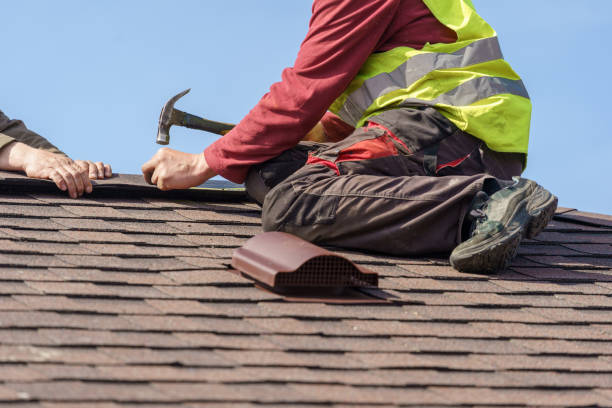In 2025, smart home technology, sustainable design, and rising repair costs are changing the way we approach property care. But even with all the innovation, many homeowners still fall into the same costly trap — waiting for visible damage, like a leak, before taking action. A small drip might seem like a minor inconvenience, but it’s often a warning sign of much larger problems waiting just out of sight. Delaying repairs, particularly when it comes to your home’s exterior, can lead to structural damage, safety issues, and thousands in avoidable expenses.
The True Cost of Waiting
A leak is rarely just a leak. By the time water makes its way into your living space — dripping from the ceiling or pooling near a wall — it has already passed through layers of insulation, wood, and possibly electrical systems. Moisture weakens these components over time, and it doesn’t take a torrential downpour to cause serious harm. Even a slow, intermittent leak can foster mold, rot, and insect infestations within weeks.
In 2025, the cost of materials, labor, and insurance claims continues to climb. What once might have been a $300 repair can quickly turn into a $3,000 restoration. Mold remediation, drywall replacement, flooring repairs, and insulation replacement can compound quickly. Taking a proactive approach is no longer a luxury—it’s a necessity.

Prevention Starts on the Outside
One of the biggest mistakes homeowners make is focusing only on what they can see inside the home. But most water intrusion starts from outside — through damaged siding, cracked caulking, loose gutters, or aging fascia. These areas are often out of sight and out of mind until the damage has already occurred. That’s where Exterior Maintenance Services come in.
A professional exterior inspection can reveal issues you may never notice during your daily routine. Small cracks in your siding, separation in trim boards, or a poorly sealed window frame can all let in water during heavy rains. These services typically include power washing, sealing, painting, and repairing trim or siding — and they’re one of the most cost-effective ways to protect your home’s envelope from the elements. With more extreme weather events occurring in recent years, taking care of the exterior is now just as important as what’s inside.
Your Roof Is Talking—Are You Listening?
Most leaks originate from the roof — but the warning signs are often subtle. You might see a dark spot on the ceiling, notice granules in your gutters, or hear the occasional drip during a storm. By then, however, water has likely already seeped through multiple layers of protection. Ignoring these signs can allow damage to spread far beyond the immediate area.
Proactive Roof Maintenance and Repair helps you catch these problems early. Inspections by trained professionals can identify cracked shingles, rusted flashing, clogged valleys, and other vulnerabilities before they become entry points for water. In 2025, new tools such as drone inspections and thermal imaging make it even easier to find hidden weaknesses that the naked eye might miss. And when problems are detected early, repairs are quicker, cheaper, and less invasive.
Insurance Claims Are Changing
Insurance companies are becoming more strict about what they cover — and what they don’t. More policies in 2025 now require proof of regular home maintenance. If you experience water damage but haven't kept up with roof or exterior upkeep, your claim could be reduced or denied entirely.
Documented Exterior Maintenance Services and routine roof inspections serve as a form of protection not only against damage, but also against rejected claims. By staying ahead of the issues, you not only safeguard your home but also strengthen your financial protection should something go wrong.
Don't Rely on Temporary Fixes
It’s tempting to patch a leak and move on, especially if the damage seems minor. But band-aid solutions rarely last. Water has a way of finding new paths, and if the root cause isn’t addressed, you’ll be dealing with the same issue again — possibly worse — in just a few months.
Whether the leak is due to worn flashing, lifted shingles, or rotted wood, proper Roof Maintenance and Repair ensures the underlying structure is restored, not just concealed. The goal isn’t just to stop water today, but to reinforce your roof against the next storm, season, or snowfall.

Small Signs, Big Problems
Here are a few signs homeowners often ignore — and why you shouldn't:
Peeling paint or stains on exterior walls: May indicate hidden moisture intrusion.
Sagging gutters: Can redirect water toward your home instead of away from it.
Cracked siding or trim: A common entry point for water during wind-driven rain.
Loose or missing shingles: One of the earliest signs of roof wear.
Algae or moss growth on the roof: Suggests moisture retention and potential decay.
Each of these might appear harmless on the surface, but collectively, they hint at deeper vulnerabilities that should be addressed before the next major weather event.
Peace of Mind in Every Season
In 2025, homeowners are not just looking for luxury — they’re looking for durability, safety, and long-term savings. Investing in Exterior Maintenance Services and consistent Roof Maintenance and Repair is a smart way to achieve all three. It keeps your property looking its best, performing efficiently, and protecting what matters most inside: your family, your comfort, and your investment.
Final Thoughts
Leaks are your home’s way of warning you — but they’re often the final warning. By the time water is visible, damage has already occurred. Don’t wait until you're cleaning up a mess, filing a claim, or scheduling emergency repairs.
Be proactive. Schedule regular inspections. Invest in professional maintenance. Because in 2025, a little prevention still goes a very long way — and might just save you from a very expensive future.












